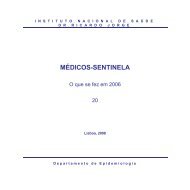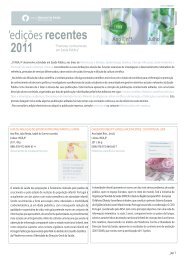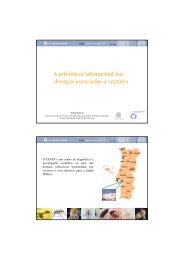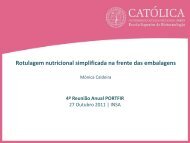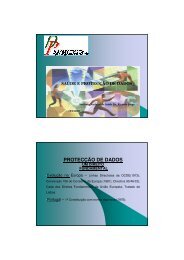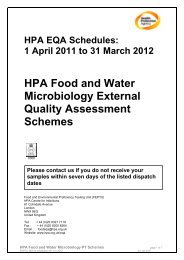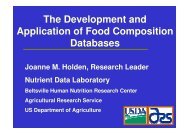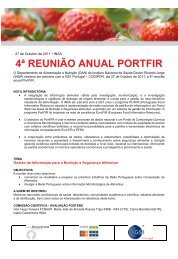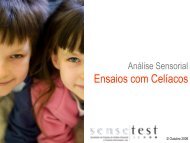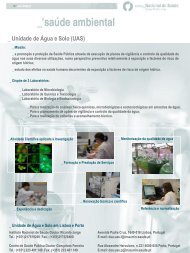European Society of Mycobacteriology - Instituto Nacional de Saúde ...
European Society of Mycobacteriology - Instituto Nacional de Saúde ...
European Society of Mycobacteriology - Instituto Nacional de Saúde ...
Create successful ePaper yourself
Turn your PDF publications into a flip-book with our unique Google optimized e-Paper software.
PP-46<br />
DETECTION OF NON TUBERCULOUS MYCOBACTERIA IN<br />
SURFACE WATERS: COMPARISON OF CULTURE METHODS<br />
Radomski, Nicolas 1 , Lucas, Francoise 1 , Cambau, Emmanuelle 2 , Moulin, Laurent 3 , Haenn, Sophie 3 , Régis, Moilleron 4<br />
1 - Leesu, Universite Paris-Est AgroParisTech<br />
2 - CNRMYC, CHU Saint-Louis <strong>de</strong> Paris<br />
3 - Crecep, Etu<strong>de</strong> biologie<br />
4 - Leesu, Universite Paris-Est AgroParisTech<br />
Since there is no evi<strong>de</strong>nce for person-to-person transmission, environment is consi<strong>de</strong>red a likely source <strong>of</strong> non tuberculous<br />
mycobacteria (NTM) infections. Particularly, environmental water, from river, lake, pond or hot spring seems being a<br />
major source <strong>of</strong> NTM. NTM has been also isolated from wastewater, from sources <strong>of</strong> drinking water, from drinking water<br />
distribution system, from tap water, and even from bottled mineral water. Among human infections caused by NTM from<br />
water origin, pulmonary infections and cutaneous infections are <strong>of</strong>ten <strong>de</strong>scribed. These NTM human infections linked<br />
to water could stem from changes in water use, from human vulnerability or from increase <strong>of</strong> virulence level among<br />
environmental strains. Also, it seems necessary to <strong>de</strong>termine the origin <strong>of</strong> these NTM in the environment, in or<strong>de</strong>r to<br />
evaluate the importance <strong>of</strong> non-clinical habitats and to <strong>de</strong>tect the emergence <strong>of</strong> virulence. Lack <strong>of</strong> knowledge about life<br />
cycle <strong>of</strong> harmful bacteria from surface water, particularly NTM, require more analytical tools which are not currently<br />
standardized or adapted to environmental samples. The aim <strong>of</strong> this study is to propose an improved culture method<br />
that could be used for counting and isolating NTM from surface water and wastewater. Based on literature, we selected<br />
different bacteriological methods from medical applications that had previously been applied to water samples. Samples<br />
from the river Seine (Paris, France) were used to select a culture method that will prevent the growth <strong>of</strong> interfering<br />
microbiota, with minimal inhibition <strong>of</strong> mycobacteria. The effect <strong>of</strong> antibiotics (polymyxin B, amphotericin B, nalidixic acid,<br />
triméthoprime, azlocillin, vancomycin) and chemical <strong>de</strong>contamination process (methods using acids, bases, <strong>de</strong>tergent or<br />
cetylpyridininium chlori<strong>de</strong>) on have been compared. Results will be discussed and a method adapted to water with high<br />
<strong>de</strong>nsities <strong>of</strong> interfering bacteria will be proposed.<br />
118 ESM 2009



